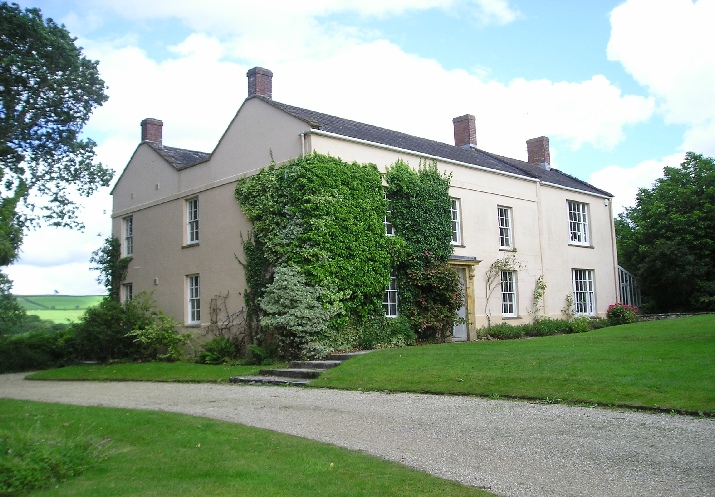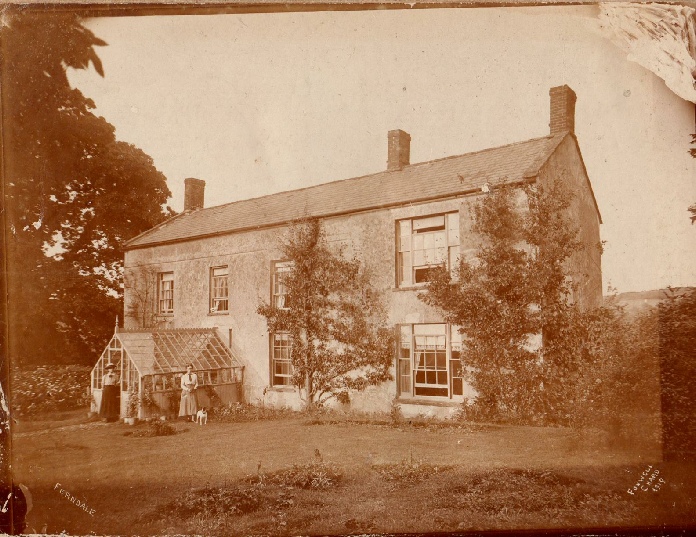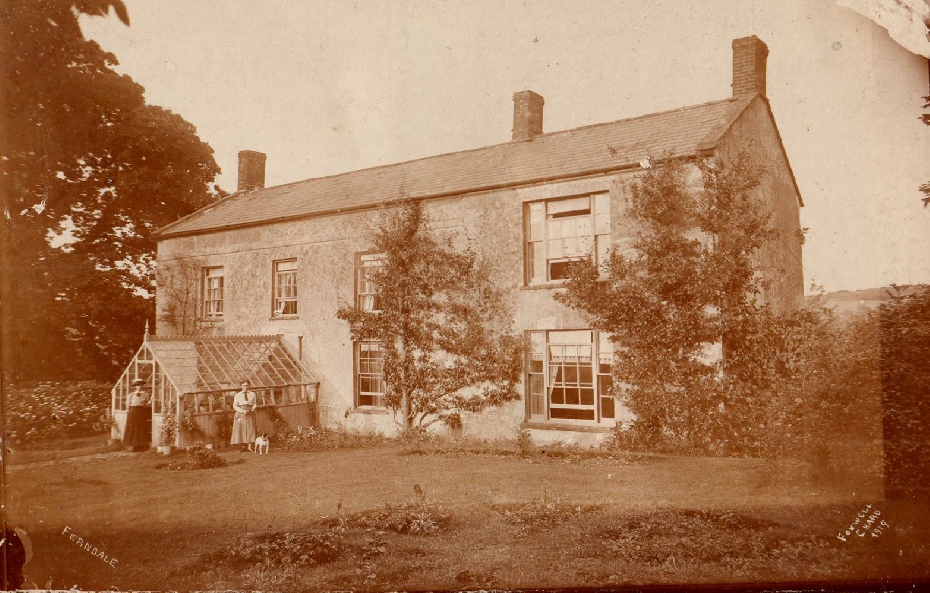THE STORY OF UPPERFOLD HOUSE, SADDLE STREET
Upperfold House in Saddle Street was built in 1828 on the site of, and incorporating
an earlier 16th century building – Laurel Cottage. Or was it? This much, and the
fact that Upperfold has been known until quite recently as Ferndale, I thought we
knew, from evidence such as a date stone found when rebuilding the old coach house,
and from what we had been told at various times.

When I was asked to write something more substantial it therefore seemed a simple
matter of checking county records and filling out these bare facts and dates with
anecdotes about the house’s owners. But it was not simple at all. We started in Dorset
History Centre, where, because Thorncombe only became part of Dorset in 1844, we
discovered the all-important tithe map was missing. 1 So, where to start.? References
to Saddle Street in the catalogue yielded nothing. Then we looked at Thorncombe
itself – not much. Still no mention of who owned or lived in Upperfold, Ferndale
or Laurel cottage, even when we ploughed back through wills and manuscripts so old
they had to be carefully placed on a cushion. In fact we asked for so many records
we began to duplicate our requests.
We decided that the tithe map was essential if we were to get any further so we
would have to repeat the process in Exeter to see what we could find. I particularly
wanted to find out about all the other little houses that ran along Saddle Street.
So off we went to the Record Office in Exeter, where at last we found the great tithe
map of Thorncombe dated 1842. From that we were able to find the property number
and relate it to the Land Tax Assessment of 1782 when these records began. It seems
that the house then on the site was known as Forseys/Cross Mill and was owned by
a Joseph Hallet whose brother owned Gough’s Barton. He lived there for 37 years until
1823.
Then Joseph Biddlecombe, a clothier whose brother George owned Greenhill, bought
the house and was recorded as paying rates of 1s4½d. Forde Abbey at the time paid
£10. After a gap in the records our next find was a Rev. John Savin, who was listed
as the owner and that the property was let to Susan Turner from 1841-1843. There
was then a further gap in the records. But by 1851 we discovered that the house had
been renamed Laurel Cottage and was lived in by Rev. John Marsh, his student cousin
Edward Templeman, Charles Bennett a pupil, Mary Gardner the Cook, and a housemaid,
Elizabeth Hawker. The name W. Marsh is scratched on our dining room window (previously
the kitchen). According to Pulman’s 1853 edition of ‘The Book of the Axe’ in 1853,
Rev. John Marsh was ‘officiating minister’ or curate to Rev. John Bragge , who was
vicar of Thorncombe. Could this graffiti then have been the work of his son? There
is yet another gap, but by 1891 the house had become Ferndale and was occupied by
two servants, Caroline Perry and Annie May.
After all this dull desk research we still had very little of human interest.
Then we struck gold in conversation with Alfred Down (Sonny), who turned out to be
the most important contributor to the history of our house. He has known it since
he came here as a teenager in 1931 to look after the garden and left 60 years later
in 1991. During this time thanks to being the beneficiary of two wills, he had been
owner and then again part owner of Ferndale. In the 1930s he planted the large oak
trees that border the garden .
Alfred’s grandmother was only six years old when her father, a tailor in London,
died. Her mother came to live in Rose Cottage on the corner of Saddle Street as a
little girl. Alfred remembers collecting parcels from Sadborow with his grandmother
for a Miss Willoughby who at this time owned our house. From Alfred we learnt that
Mr Marsh rented the house from the Bragges of Sadborow and that he had been followed
by Miss Willowby (a relation of the Bragges), then by a Miss Wise.
In 1915 the modern history of the house began when the Misses Jones, Ada and her
sister Maude, who first of all rented from Miss Bragge and then in 1926 purchased
it. At this time the Misses Jones needed curtains making and their dresses shortened
to follow the latest fashion, so they asked Alfred’s sister May, who was a dressmaker
in Hawkchurch and of whom they were very fond, to come and live in. When the second
world war came households were allowed to keep one inside maid, otherwise May would
have had to join the Land Army.
In ‘Thorncombe: Life and Memories and the History of the Parish’ Ron Farley recalls
that, ‘The Misses Jones were very kindly old ladies, and were on the School Governors
Board, and would come into the school to mark the register, and each child would
have to stand and answer present Ma’am, when they left they always made sure each
child had a few sweets, or an apple or an orange. Once or twice a year they would
invite all the children to a tea party at ‘Ferndale’, there were always games indoors
and out. We always had to call them Miss Jones, Miss Ada or Maude, real genteel ladies,
they were, anyone village they heard was ill they would send a mild pudding or some
fruit.’
During the Misses Jones’s time, the entrance from Saddle Street was through what
is now the field behind the old coach house. Their carriage was driven round to what
is now our gravel drive, between clipped box hedges in diamond and square shapes.
Miss Maude died in 1952 and May and Alfred stayed with Miss Ada until she died in
1963 aged 99.
After all this, however, we still have no idea who was responsible for the building
of the Georgian House, or when Laurel Cottage became Ferndale and when the 19th century
extension was built and by whom. However we do know that the names was changed from
Ferndale to Upperfold House in the Philpott Curran era because this had been the
name of their estate in Yorkshire. The Philpott Currans came to live at Saddle Street
in 1964, and thoroughly modernised the house, making a new driveway where it is
today and replacing the old glassed-in front door with a conservatory on the south
end. Ronald and Fiona Harrington purchased the house on the death of Mrs Philpott
Curran in 1998 and, two years later, having replaced with a modern wing all that
remained of the 16th century Laurel Cottage, sold it to us in 1990.
CARYL BICKNELL
First published in the TVT News, winter 1996 and reproduced by kind permission of
Peter Bicknell who lived alone at Upperfold following Caryl’s death in 2005. The
house changed hands again in 2012.





